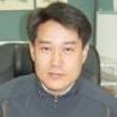Shape Memory Alloys: Modeling and Engineering Applications in Civil Engineering
A special issue of Materials (ISSN 1996-1944). This special issue belongs to the section "Metals and Alloys".
Deadline for manuscript submissions: closed (1 July 2021) | Viewed by 631
Special Issue Editor
Interests: shape memory alloys structures; smart materials; reinforced composites; manufacturing technology
Special Issues, Collections and Topics in MDPI journals
Special Issue Information
Dear Colleagues,
Shape memory alloys (SMAs) are rising as a smart material in mechanical, aerospace, and civil engineering. The unique properties of the SMAs are shape memory effect and superelasticity. Both are very useful to realize smart devices with self-centering, self-curing of cementitious materials, and seismic retrofits. NiTi SMAs have been generally used because of their good mechanical properties, such as wide recovery strain range, superelastic behavior with large strain, excellent resistance to corrosion and fatigue. However, because of high costs, Fe-based SMAs have recently been introduced for civil applications with lower cost and high recovery stress compared with the NiTi SMAs.
The SMAs are used in various shapes such as wires, short fibers, cables, plates, bars, or special shapes of rings or coil springs. They are used separately to compose smart devices or dampers and can be embedded in materials made of concrete/mortar or plastic to enhance performance or to improve the material properties. Thus, they can be placed into inner or outer materials with various combinations.
Behavior of the SMAs is usually asymmetric in tension and compression, and the modeling of the behavior is continuously studied. Usually used symmetric models of the superelasticity cannot describe exactly the hysteretic behavior of the SMAs. Mathematical models of superelastic or martensitic SMAs are being tried to describe exact hysteretic behavior.
SMA studies are a hot topic in civil engineering, and thus it is our great pleasure to invite you to submit a manuscript for this Special Issue.
Prof. Eunsoo Choi
Guest Editor
Manuscript Submission Information
Manuscripts should be submitted online at www.mdpi.com by registering and logging in to this website. Once you are registered, click here to go to the submission form. Manuscripts can be submitted until the deadline. All submissions that pass pre-check are peer-reviewed. Accepted papers will be published continuously in the journal (as soon as accepted) and will be listed together on the special issue website. Research articles, review articles as well as short communications are invited. For planned papers, a title and short abstract (about 100 words) can be sent to the Editorial Office for announcement on this website.
Submitted manuscripts should not have been published previously, nor be under consideration for publication elsewhere (except conference proceedings papers). All manuscripts are thoroughly refereed through a single-blind peer-review process. A guide for authors and other relevant information for submission of manuscripts is available on the Instructions for Authors page. Materials is an international peer-reviewed open access semimonthly journal published by MDPI.
Please visit the Instructions for Authors page before submitting a manuscript. The Article Processing Charge (APC) for publication in this open access journal is 2600 CHF (Swiss Francs). Submitted papers should be well formatted and use good English. Authors may use MDPI's English editing service prior to publication or during author revisions.
Keywords
- Shape memory alloys
- Shape memory effect
- superelasticity
- Smart devices
- Fe-based SMAs






